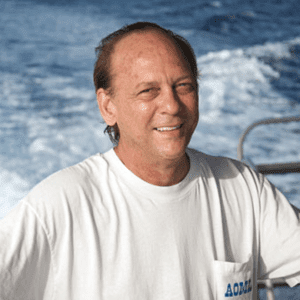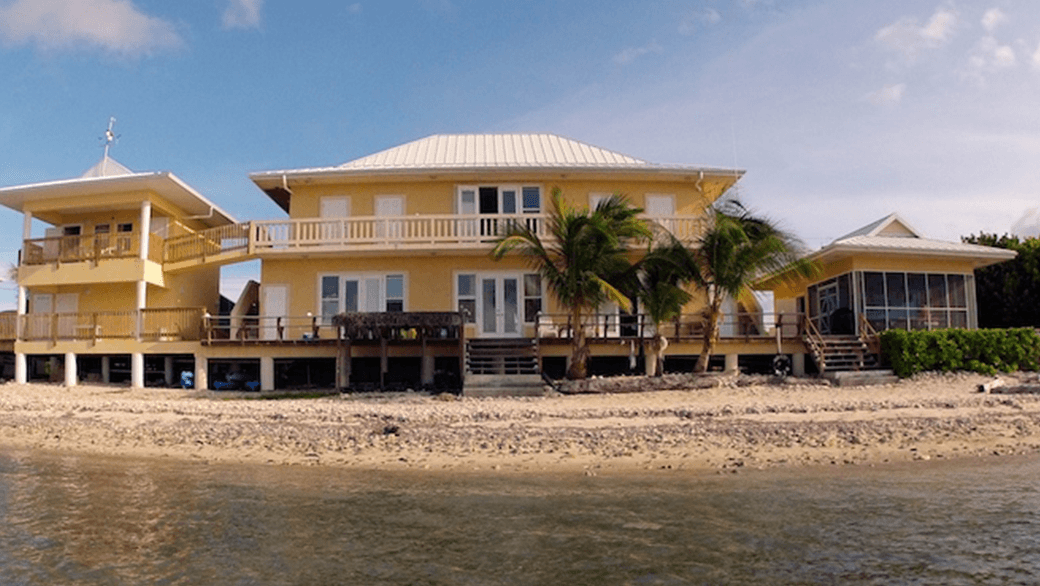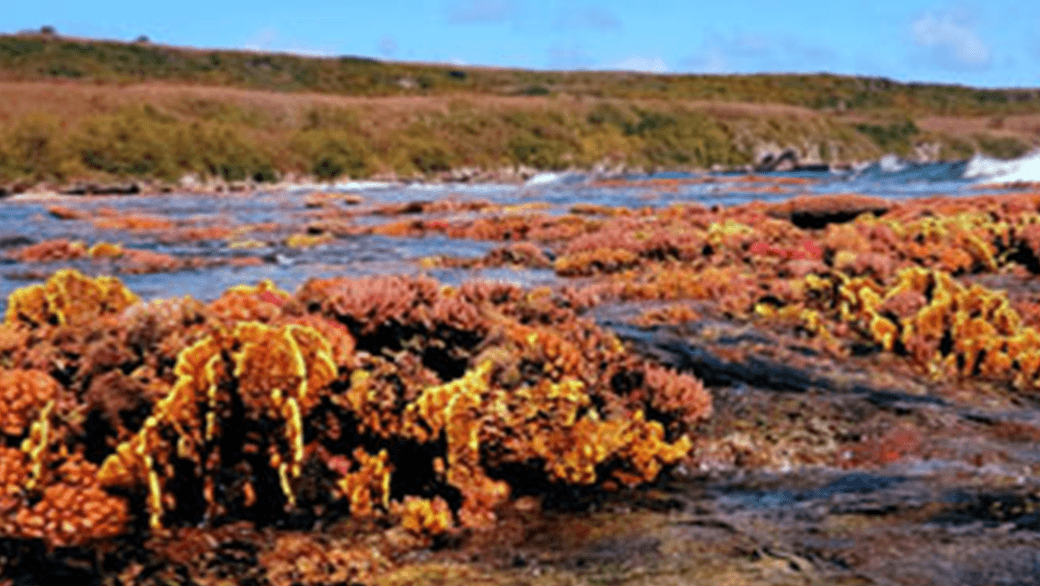Coral Health and Monitoring Program (CHAMP) researchers at AOML have worked cooperatively with the Caribbean Community Climate Change Centre (CCCCC), headquartered in Belize, over the past several years to install Coral Reef Early Warning System (CREWS) stations at key coral reef sites in countries throughout the Caribbean. CREWS stations monitor an array of atmospheric and oceanographic parameters to assess the health and integrity of coral reefs. The stations are part of the CCCCC’s efforts to strengthen the Caribbean region’s ability to respond to climate variability, extreme weather conditions, pollution, and habitat change.
AOML Oceanographers to Participate in New Summer Lecture Series
This summer, AOML will be diving into a new outreach initiative with the Central Caribbean Marine Institute, a coral reef research organization based in the Cayman Islands. From June through August, NOAA oceanographers from AOML will give a series of talks on various oceanographic topics to the institute’s staff and students participating in the National Science Foundation’s (NSF) Research Experiences for Undergraduates program at the institute’s Little Cayman Research Centre (LCRC).
Central Caribbean Marine Institute is a non-profit organization whose mission is to conduct and facilitate research, education, outreach and conservation programs that will sustain marine diversity. They support key research into addressing global issues such as climate change, marine protection, fisheries management and coral reef impacts. Every summer, the institute hosts undergraduate students at the LCRC as part of the NSF funded research program. Students work with mentors to design, implement, and present research projects within the institute’s research themes of coral reef stress, climate change, ocean acidification, and coral reef resilience and restoration.
This lecture series provides students with an opportunity to gain insight into current coral reef research programs in order to help them refine their summer projects. The series also offers networking opportunities for students and staff and fosters relationships with the AOML research community. Topics will range from ocean-reef interactions, microbiology, ecosystem-based management, and impacts to coral health. Funding for the lecture series is being provided by CCMI.
“I always get bored with minute-detail subjects like molecular studies, but Dr. Chris Kelble’s lecture on the science to inform ecosystem-based management was all about the bigger picture. It’s a topic that I would love to get into,” said Brian Griffiths, an REU student from the University of Delaware. “Dr. Kelble was the first scientist I’ve encountered so far that thinks like I do. He was a great role model to have met!”
In addition to providing lectures, NOAA oceanographers will be teaming up with CCMI scientists and the National Centers for Environmental Information to examine variations of temperature and light at the local scale over the coral reefs surrounding Little Cayman Island. Collecting and analyzing this important data will enhance NOAA’s coral reef ecological forecasting tools and help evaluate the adequacy of regional-scale observations in monitoring for environmental threats to the reefs. This data will also assist other research projects being carried out by various research groups on the Little Cayman reefs including projects focused on constructing a global climate record using coral core samples, connecting water conditions to algal growth on the reefs, and investigating why some reefs are more resilient than others over small distances.
Located on Little Cayman Island, the LCRC is situated next to some of the most biologically diverse reef systems on earth. These reefs are particularly important to coral reef scientists as they are largely unaffected by local human and development impacts. This isn’t the first time NOAA oceanographers will collaborate with the Little Cayman-based research center. NOAA’s Coral Reef Early Warning System (CREWS) established a monitoring station on the reef adjacent to the research center in 2009. CREWS stations are scattered across the Caribbean and contain a suite of oceanographic and atmospheric sensors that monitor environmental conditions in an effort to provide scientists with early warning of climate-related events such as coral bleaching.
See below for a complete schedule of the lecture series:
June 23 – 29
– “Synergistic Effects of Eutrophication and Elevated SST in the Early Life Stages of Two Caribbean Corals”
July 30 – August 3
– “Molecular Microbiology in the Marine Environment: Biocomplexity, Microbial Source Tracking, and Metagenomic Observations”
– “Interactions Between Ocean Health and Human Health”
– “Coral Research at NOAA/AOML’s Ocean Chemistry and Ecosystems Division”
– “Supporting NOAA Coral Reef Research: the Cooperative Institute for Marine and Atmospheric Studies”
August 3 – August 7
– “Spatial Gradients in Carbonate Chemistry and Their Influence on Ecosystem Processes”
– “Science to Inform Ecosystem-Based Management”
– “Sloshing and Mixing Between Reef and Ocean: Physical Processes Impacting Connectivity and Thermal and Biogeochemical Variability for Cayman Corals”
AOML Selects Coral Researcher, Jim Hendee, to Lead Ocean Chemistry & Ecosystems Research
 AOML is proud to announce the selection of Dr. James “Jim” Hendee as the director of its Ocean Chemistry and Ecosystems Division. Internationally recognized for his expertise in coral observing systems and data management, Jim’s almost 25-year tenure with AOML began in 1990 as a data manager for several ocean chemistry programs. Jim is well known for his ability to leverage resources to innovatively develop and inspire productive research teams. Jim steps into the role of director after serving in an acting capacity since June 2013.
AOML is proud to announce the selection of Dr. James “Jim” Hendee as the director of its Ocean Chemistry and Ecosystems Division. Internationally recognized for his expertise in coral observing systems and data management, Jim’s almost 25-year tenure with AOML began in 1990 as a data manager for several ocean chemistry programs. Jim is well known for his ability to leverage resources to innovatively develop and inspire productive research teams. Jim steps into the role of director after serving in an acting capacity since June 2013.
Jim’s early career at AOML blossomed as he oversaw data management of the newly established SEAKEYS program, a network of lighthouses and other platforms that collect hourly in situ sea temperature and meteorological data at coral reef sites along the Florida Keys. Jim initially gathered SEAKEYS data and distributed it daily via fax (“Coral Fax”) to environmental managers in the Florida Keys, as well as to dive boat and fishing charters. Seeing an opportunity to embrace emerging technology and the burgeoning Internet, Jim successfully launched the “Coral Health and Monitoring Program” (CHAMP) to start the very first coral reef related Web page, and one of the first 3,000 Web sites in the world. The server was also used to host a list-server called Coral-List with about 100 names taken from the attendee list for the 8th International Coral Reef Symposium in Panama. That list still operates today with over 8,500 subscribers and has become the de facto means of broad communication among coral reef researchers the world over.
In 1998 Jim was chosen as one of the members of the newly established U.S. Coral Reef Task Force Monitoring Working Group. Jim and his growing team of NOAA oceanographers eventually devised a new design for in situ coral reef monitoring and began installing the design at coral reef sites in the Caribbean, with funding help from NOAA’s newly formed Coral Reef Conservation Program.
Through the years the CHAMP program has received over $8 million for coral reef research and to develop the expert system that is the heart of the CREWS ecological forecasting system. Jim’s efforts have supported acquisition of an appreciable amount of computing hardware and software, oceanographic and meteorological instrumentation, and supported five major international workshops. Jim also leverages the continuing CHAMP funds to establish and support new research directions (e.g., ocean acidification, ecological forecasting, physical oceanography of coral reefs) and personnel support for research scientists and system administrators, five National Research Council post-docs, and numerous Hollings Scholars and student interns.
From 1993 to 2000, Jim worked nights to earn a Ph.D. in Information Systems from Nova Southeastern University. His previous degrees include a B.S. and M.S. in marine biology. In 2000, Jim received the NOAA Research Employee of the Year award, and in 2005 the NOAA Bronze medal for establishing the CREWS Network.
Originally Published in February 2015 by Shannon Jones
AOML Travels to Saipan to Expand Coral Observations
NOAA oceanographers traveled to Saipan this spring to refurbish the Coral Reef Early Warning System (CREWS) station in Lao Lao Bay and conduct site surveys for the potential location of a moored autonomous pCO2 (MApCO2) buoy. Staff from the Pacific Islands Ocean Observing System (PacIOOS) program in Honolulu joined them during the site visit hosted by the Division of Environmental Quality (DEQ) of the Commonwealth of the Northern Mariana Islands (CNMI).
NOAA is currently implementing its National Coral Reef Monitoring Plan, which calls for sustained monitoring of climate, biological, and socio-economic metrics at all U.S. coral reefs. As part of the plan, three sentinel sites in the Atlantic and Pacific basins are to be established for high resolution monitoring of climate change variables such as temperature and carbon dioxide. Researchers identified Saipan as a potential candidate for one of the Pacific sentinel sites based on the successful installation of the CREWS pylon in 2011 and the ongoing relationship between DEQ, AOML, and other groups.
Over a two-week period, work on the two projects proceeded in tandem. CNMI personnel performed all of the refurbishment efforts on the upper portion of the CREWS station with guidance, as needed, from the AOML team, while AOML and PacIOOS divers deployed the underwater sensors and secured their cables.
The MApCO2 team arrived in Saipan with the hope of finding the optimal buoy site close to the CREWS station in Lao Lao Bay. Somewhat to their surprise, however, Sugar Dock emerged as the most favorable buoy deployment site due to its almost year-round accessibility and freedom from issues that might interfere with ocean acidification monitoring such as groundwater, runoff, and sedimentation.
While no final decisions have yet been made about the MApCO2 buoy placement, the team departed Saipan having met with many of the key people in CNMI and having learned a great deal about the ongoing data collection efforts at these sites for the past many years. The AOML team thanks all of their collaborators in these two projects.

